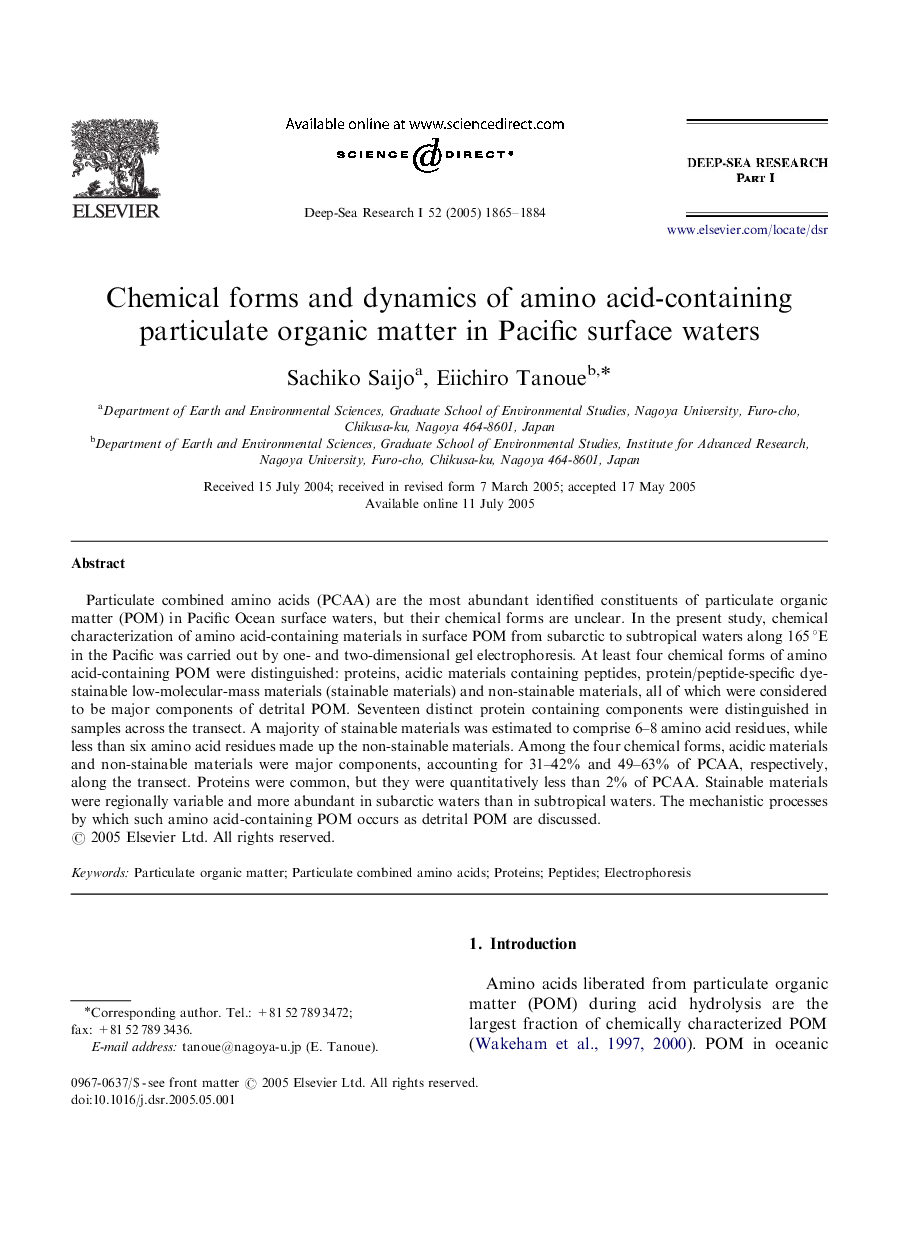| Article ID | Journal | Published Year | Pages | File Type |
|---|---|---|---|---|
| 9479568 | Deep Sea Research Part I: Oceanographic Research Papers | 2005 | 20 Pages |
Abstract
Particulate combined amino acids (PCAA) are the most abundant identified constituents of particulate organic matter (POM) in Pacific Ocean surface waters, but their chemical forms are unclear. In the present study, chemical characterization of amino acid-containing materials in surface POM from subarctic to subtropical waters along 165 °E in the Pacific was carried out by one- and two-dimensional gel electrophoresis. At least four chemical forms of amino acid-containing POM were distinguished: proteins, acidic materials containing peptides, protein/peptide-specific dye-stainable low-molecular-mass materials (stainable materials) and non-stainable materials, all of which were considered to be major components of detrital POM. Seventeen distinct protein containing components were distinguished in samples across the transect. A majority of stainable materials was estimated to comprise 6-8 amino acid residues, while less than six amino acid residues made up the non-stainable materials. Among the four chemical forms, acidic materials and non-stainable materials were major components, accounting for 31-42% and 49-63% of PCAA, respectively, along the transect. Proteins were common, but they were quantitatively less than 2% of PCAA. Stainable materials were regionally variable and more abundant in subarctic waters than in subtropical waters. The mechanistic processes by which such amino acid-containing POM occurs as detrital POM are discussed.
Related Topics
Physical Sciences and Engineering
Earth and Planetary Sciences
Geology
Authors
Sachiko Saijo, Eiichiro Tanoue,
